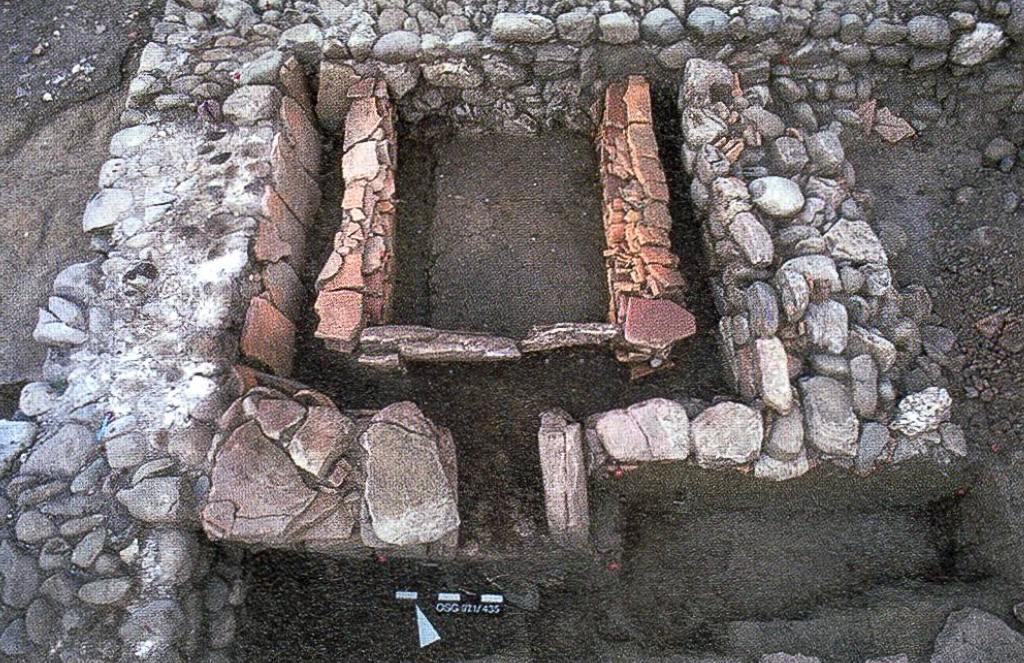Kirchdorf, part of Obersiggenthal, is located near the river Limmat, about 5 kilometers to the east of Brugg. So far five buildings belonging to a villa have been investigated in the centre of Kirchdorf during (emergency) excavations, the first in 1942 by Walter Drack. The buildings were erected in the second century, four were destroyed by a fire aroud the middle of the third century, but two were used again later. The main building has not been located.
The location of buildings A-E. Wicki 2013, Abb. 2.
Building A consisted of a large main room (17 x 13.50 m.) and a few smaller rooms. In two of the latter rooms hearths were found, one with an oval, iron pan on top, in situ, buried below the roof that had collapsed during the fire. About 20 meters to the south is building B, a single room measuring 17.50 x 13 m., with a hearth. These two buildings may have been workshops, also used as stables and for the stationing of wagons (amongst the finds were many metal parts of wagons).
Buildings A and B, lost after excavation due to modern building activity. Photo: Wicki 2013, Abb. 3.
The hearth with an iron pan in building A. Photo: Wicki 2013, Abb. 7.Buildings A and B were the only buildings that were used again after the fire. Two kilns were installed for drying agricultural products, such as grain, and for the preservation (smoking) of meat. Bones of cows, pigs and sheep were found.

The remains of the smoking furnace in building B. Photos: Wicki 2013, Abb. 21 and 22.Of building C only a small part was investigated. Remains of plaster were found. Building D measured 17.50 x 18.50 m. All that remained of building E was a small cellar, filled with debris resulting from the fire. Buildings C and E must have been parts of houses. Coins, fragments of window glass, and many metal objects were found.
The cellar of building E. Photo: Wicki 2013, Abb. 12.
Literature
Drack 1942; Drack 1943; Drack 1944(2); Drack 1945(2); Jahrbuch der Schweizerischen Gesellschaft für Ur- und Frühgeschichte 65 (1982), 197; Hartmann-Weber 1985, 192-193; Maier 1986; Jahrbuch der Schweizerischen Gesellschaft für Ur- und Frühgeschichte 77 (1994), 207; Bellettati-Lassau 1998; Schaer-Widmer 2004; Wicki 2013; Casaulta-Burckhardt-Ingold 2017.
[24-Aug-2023]